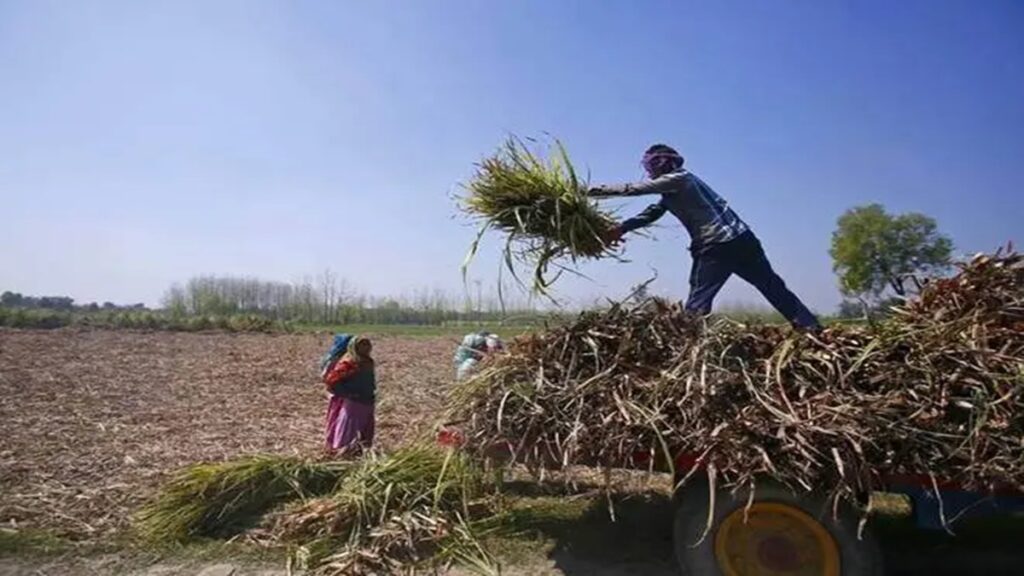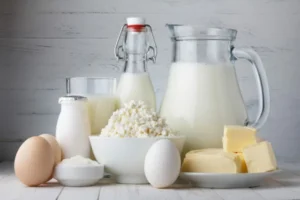
The National Trade Estimate Report of the United States has raised concerns that non-tariff barriers by India make it near impossible to export dairy and poultry products besides staple grains such as rice and wheat. Sandip Das explains that the ring-fencing by India is due to food security imperatives, vulnerability of the millions of marginal farmers and dietary preferences
l What the US report says about non-tariff barriers imposed by India
THE REPORT OUTLINED concerns about the science and risk basis for India’s sanitary and phytosanitary-related trade barriers to food and agricultural imports. For instance, it says India requires dairy products intended for food be derived from animals that have not consumed feeds containing internal organs, blood meal, or tissues of ruminant or porcine origin and that exporting countries certify to these conditions, “which lack a discernable animal health or human health justification”. On India’s hesitation to approve genetically modified feed and food products, it says that New Delhi does not appear to take into account science-based approval processes for genetically engineered (GE) products in exporting countries.
India’s minimum support prices (MSP) for major grains such as wheat and rice also drew attention, with the report saying it results in overproduction, limited demand for imports, and artificial export competitiveness.
l What are the reservations against GM products?
INDIA HAD FIRST approved Genetically Modified (GM) cotton way back in 2002. Since 2008, no new varieties of GM cotton seed have been approved. BT brinjal was approved in 2012 by the Genetic Engineering Approval Committee (GEAC, which was later converted into the Genetic Engineering Appraisal Committee with truncated powers), but it was shelved by the government later citing environmental concerns.
Last year, a Supreme Court division bench has issued a split verdict on petitions challenging the approval given by the Genetic Engineering Appraisal Committee and the ministry of environment and forests to commercially cultivate and release a genetically modified mustard variety— HT Mustard
DMH-11. Agriculture minister Shivraj Singh Chouhan also recently said that GM technology is ‘like playing with nature”, even if it helps increase productivity.
l Protecting the dairy sector
PER THE NATIONAL Account Statistics, 2024, India’s milk output by value accounts for the highest share in agriculture produce and, even more than the combined value of paddy and wheat. R S Sodhi, president, Indian Dairy Association, says the dairy sector should not be unnecessarily tinkered with as it has been growing steadily over the last few decades. He says the sector should not be seen only from a trade perspective as around 100 million farmers are engaged in dairy and allied sectors.
Industry sources say higher import duties on skimmed milk powder are justified as a typical Indian dairy farmer has 2-3 animals against an average herd size of 500 animals in major milk producing countries like the US, Australia and New Zealand, which reduces their cost of production. Meenesh Shah, chairman, National Dairy Development Board (NDDB), says that global dairy players, even if they were allowed to operate in India, would find it very difficult due to the high costs of logistics. Dairy industry officials have indicated that there are no discussions at the moment about reducing import duties on dairy products.
India also requires that imported dairy products must come from animals not fed animal-derived feed, a norm that stems from religious and cultural sensitivities of a large section of the vegetarian population here.
l Domestic poultry & feed markets
THE US HAS been insisting on a liberalised imports regime for soyabean (primarily used for animal feed) and chicken legs for many years. Any cut in import duties on chicken legs (currently 100%) should be considered after taking into account the needs of the domestic poultry industry which offers employment to over 5 lakh families, trade sources say. Higher duty structure is aimed at protecting the domestic industry which is growing at around 8% annually. For animal feed, India has imposed a few non-tariff barriers such as ban on GM crops and compulsory certification requirement. In 2021, the government had allowed import of 1.2 mn tonne of GM soyameal for chicken feed on an exceptional basis due to high domestic feed prices.
l International trade in rice, wheat
INDIA HAS BEEN the biggest exporter of rice since 2012. India did impose restrictions on rice exports in 2023, which it has since removed. Being one of the largest producers of rice, there is no possibility of imports though import duty has been kept at 70%.
In April 2019, import duty on wheat was increased to 40% from 30% to boost procurement by the government agencies. Many traders from southern India have been calling for reducing this to facilitate imports as transportation cost of wheat to the southern states from Madhya Pradesh is high while global prices often rule below the minimum support price (MSP) offered to farmers.
Though export of wheat is banned to maintain domestic supply, at times the government allows it to meet the food security needs of certain countries.





